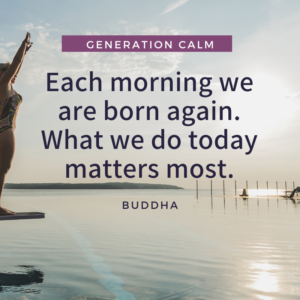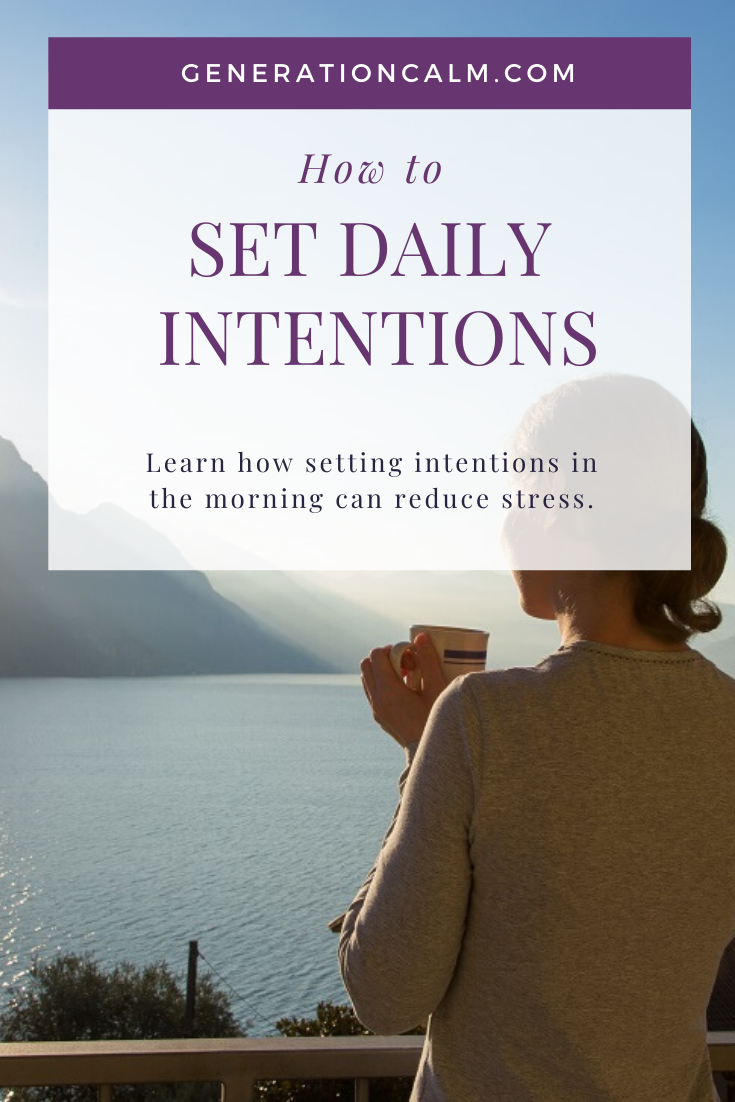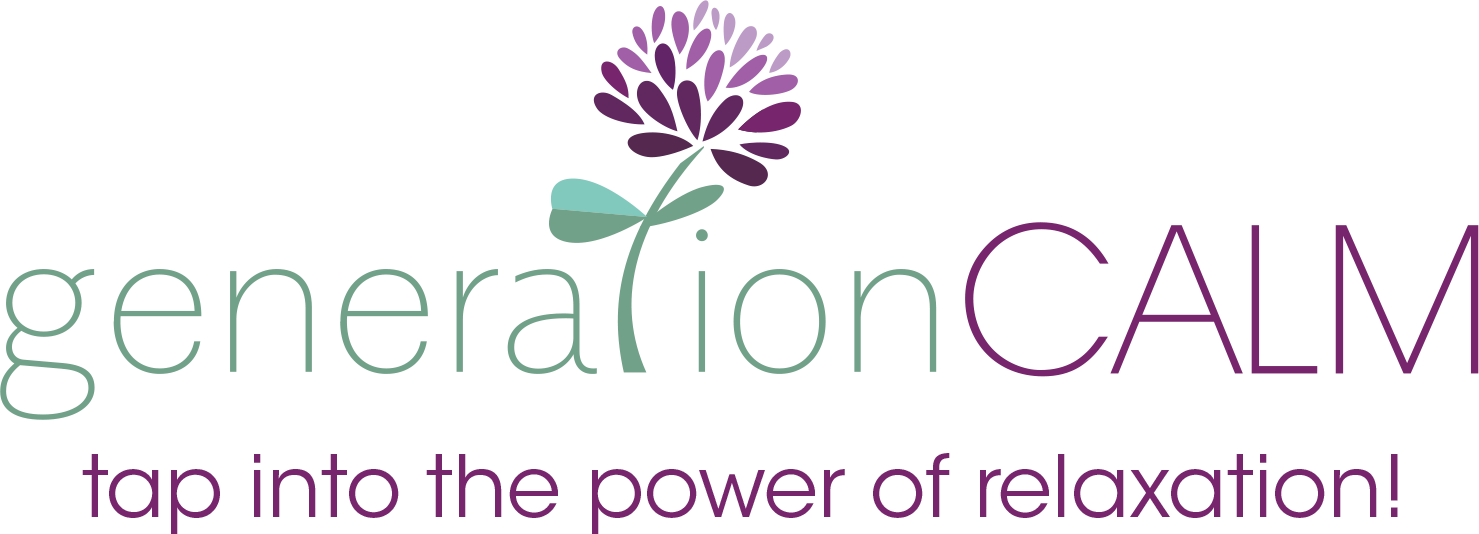Setting daily intentions – An easy way to reduce stress
Looking for an easy daily practice that will have a meaningful impact on your mental wellness?
Setting a morning intention for the day is probably the easiest.
Why setting intentions for the day reduces stress
Your brain has a filtering mechanism that works without you even being aware of it, called the automatic system. This is where your brain processes information without you being consciously aware of it. If your brain didn’t filter out useless information automatically, you’d be overloaded with too much stimuli.
You have limited time and attention so you want to make sure you take the time to make a conscious decision about what matters most to you before your day starts. Then your brain will choose that perspective as its filter. (Caroline Webb devotes an entire chapter to choosing your filters in How to Have a Good Day).
A daily intention will:
- Keep you focused and mindful
- Get you aligned with your core values
- Keep you on track with your goals
- Reduce stress about missing important information or decision-making

How to set a daily intention
You can use your brains filtering mechanism to your advantage, by setting a daily intention. It only takes a couple of minutes but it makes a huge difference.
So let’s do this now. In a moment of stillness think about your upcoming activities for the day and ask yourself;
- What really matters to you, given your tasks of the day?
- What’s important in making these tasks a success?
- Where do you want to focus your attention?
- What opportunities do you want to look for?
Take the time to listen to your body-mind wisdom. Only you can decide where your priorities lie – otherwise your brain, or even worse, another person, will decide for you.
Now you know your important priorities for the day, notice any concerns bubbling away in the back of your mind or your mood. If these worries are not going to help you achieve your activities, simply let them float away.
Put your intention into a series of words or a phrase such as ‘quick, easy and efficient’, ‘collaborative team work’, or ‘tolerance and patience’. It will guide you through the rest of your day and how you show up.
Congratulations, now you have a thoughtful set of rules to prioritize your attention, so you don’t just jump into doing what’s most urgent or get bogged down by trivial matters. It’s like your North Star guiding you to live in line with your values.
Setting intentions examples:
- I love visiting my country of origin England – but it’s intense. I try to cram in as much as I can, seeing as many old friends, family and doing as many activities as possible. But I get stressed and my attention is scattered. So last time, I came up with an intention before our vacation ‘fun, family time’. I would hold each potential activity to the ‘fun, family time’ test, if it didn’t match up – I ditched it! So, seeing an old friend whose kids have gotten my son sick in the past? No, not fun, family time. Going to a lovely country pub for a lunch? Yes, that’s fun, family time. It helped remove stress because I had already decided beforehand what mattered most to me.
- When Suzy had her annual work evaluation she aimed to have one intention to guide her behavior in the meeting. So she asked herself what really matters to her in her work environment. She decided being creative was most important. When talking to her manager the word ‘creativity’ was her guiding star.
- Today, I have to do some housecleaning. Cleaning is not my thing. In fact, I would rather do anything but clean. So doing it ‘quick, calm and efficiently’ is my priority.
Conclusion
Remember, your stress is relieved by focusing your attention on what really matters in the moment. You are the only person who can know what you hold most dear to you. So take the time every morning, or before an activity to ask yourself what matters most in making it a success and then allow yourself to be guided by this intention. Revisit it throughout your day for a refresher.

Want to set an intention for the year? Follow along with my guided meditation on YouTube.
Suggested reading:
WEBB, Caroline (2016) How to Have a Good Day: Harness the Power of Behavioral Science to Transform your Working Life

